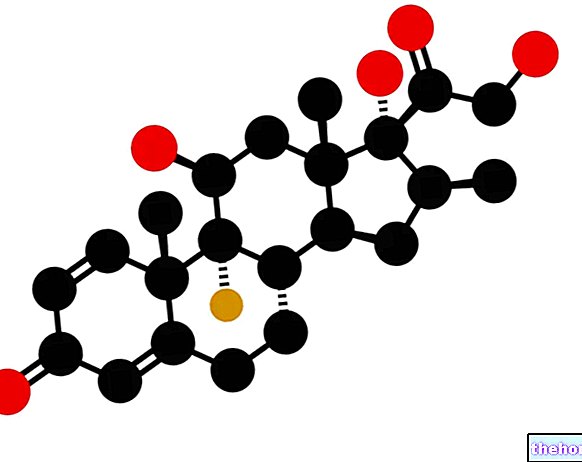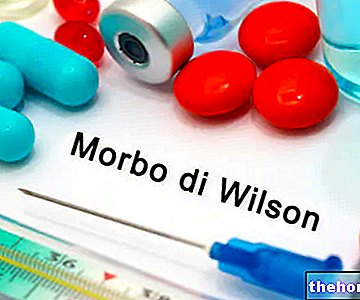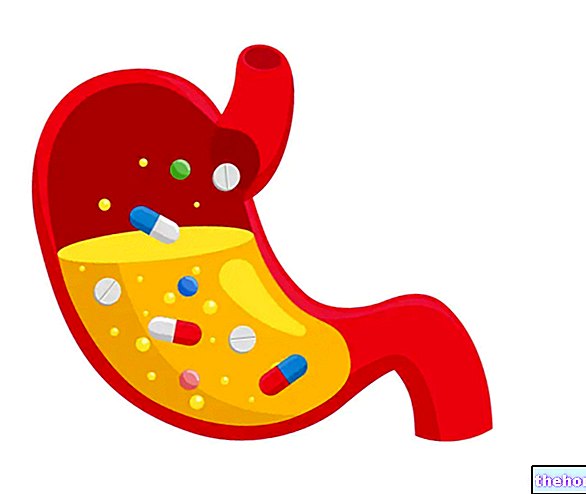CEDAX ® is a Ceftibuten-based drug
THERAPEUTIC GROUP: General antimicrobials for systemic use - Cephalosporins

Indications CEDAX ® Ceftibuten
CEDAX ® is used in the treatment of bacterial infections caused by microorganisms sensitive to cephalosporins.
CEDAX ® has been shown to be particularly effective in treating respiratory and urinary tract infections.
Mechanism of action CEDAX ® Ceftibuten
Ceftibuten, active ingredient of CEDAX ®, is an antibiotic belonging to the category of beta-lactams and more precisely of the third generation semi-synthetic cephalosporins, characterized by:
- Broad spectrum of action, both against Gram positive microorganisms such as Staphylococci and Streptococci and Gram negative such as Neissieria, Hemophilus influenzae and Enterobacteria;
- High stability against plasmid beta-lactamases, resistance enzymes produced by microorganisms capable of neutralizing the antibiotic activity of beta-lactams;
- Advantageous pharmacokinetic characteristics.
In fact, Ceftibuten, taken orally, reaches its maximum plasma concentration in 2-3 hours, to be subsequently distributed to the various organs, where by easily permeating the plasma membranes it reaches concentrations similar to those present in the circulation.
At this point the active principle carries out its therapeutic activity by inhibiting the transpeptidation reaction, useful for the formation of cross-linking between the peptidoglycan molecules, compromising the stability of the bacterial wall and thus causing the death of the microorganism by osmotic lysis.
Following a half-life of approximately 2-3 hours, ceftibuten is eliminated unchanged by the kidney.
Studies carried out and clinical efficacy
1.The "EFFECTIVENESS OF CEFTIBUTEN IN THE TREATMENT OF INFECTIONS OF THE URINARY TRACT
Pediatr Nephrol. 2009 Mar; 24: 521-6. Epub 2008 Sep 26.
Ceftibuten versus trimethoprim-sulfamethoxazole for oral treatment of febrile urinary tract infection in children.
Mårild S, Jodal U, Sandberg T.
Work that demonstrates how ceftibuten is effective and safe in the treatment of urinary tract infections in small patients, even when complicated by fever and dysuria.
2 . CEFTIBUTEN-RESISTANT GONORREA NESSIERIA STAINS
Antimicrob Agents Chemother. 2008 Oct; 52: 3564-7. Epub 2008 Jul 28.
Ceftibuten resistance and treatment failure of Neisseria gonorrhoeae infection.
Lo JY, Ho KM, Leung AO, Tiu FS, Tsang GK, Lo AC, Tapsall JW.
Neisseria gonorrhoeae, the causative agent of gonorrhea or blenorrhagia, has been effectively treated with ceftibuten for a long time. However, this study denounces the emergence, in the eastern population, of resistant strains characterized by the expression of genes capable of extending the spectrum of antibiotic resistance also to cephalosporins.
In order to limit the spread of these strains, non-chemotherapy prophylaxis is very important.
3. THE CEFTIBUTEN IN THE TREATMENT OF Pharyngotonsillitis
Fortschr Med Orig. 2001 Jul 19; 119 Suppl 2: 63-70.
Five days ceftibuten versus 10 days penicillin in the treatment of 2099 patients with A-streptococcal tonsillopharyngitis.
Adam D, Scholz H, Helmerking M.
Very interested clinical trial that demonstrates how ceftibuten, despite being effective in the treatment of streptococcal pharyngotonsillitis, is not able to achieve the same eradication rate guaranteed by penicillins.
Method of use and dosage
CEDAX ®
400 mg capsules of ceftibuten;
Ceftibuten 36 mg granules for oral suspension per ml of solution.
In most cases, the administration of 400 mg of ceftibuten per day is effective in controlling the infection ensuring a prompt remission of symptoms.
The dose could be divided into two different daily intakes or be taken as a single dose.
An adjustment of the doses used is necessary in pediatric and senile patients or in patients with renal insufficiency.
It is also useful to remember how taking it with meals could delay the systemic absorption of the drug, without however changing its therapeutic efficacy.
CEDAX ® Ceftibuten Warnings
Treatment with CEDAX ® should be preceded by a careful medical examination useful to evaluate the prescribing appropriateness and the possible presence of conditions incompatible with the antibiotic treatment.
Particular caution should be reserved for elderly patients or patients suffering from kidney disease, given the increased susceptibility to adverse reactions to the antibiotic.
The possible occurrence of adverse reactions of various kinds, even those of a dermatological nature, should alarm the patient, who, after consulting his doctor, could consider the possibility of suspending the therapy in progress.
Prolonged and disproportionate use of the antibiotic could facilitate the emergence of resistant microbial strains and at the same time increase the risk of infection with Clostridium difficile, with consequent pseudo-membranous colitis.
CEDAX ® contains sucrose, making it unsuitable for patients with fructose intolerance, sucrase-isomaltase enzyme deficiency or glucose / galactose malabsorption syndrome.
PREGNANCY AND BREASTFEEDING
The absence of clinical trials capable of characterizing the therapeutic efficacy and safety profile of ceftibuten on the fetus limits the use of CEDAX ® during pregnancy and in the subsequent breastfeeding period, exclusively to cases of real necessity and always under close specialist medical supervision.
Interactions
The different pharmacokinetic studies carried out did not reveal drug interactions between ceftibuten and other relevant active ingredients.
However, it would be useful to remember how the presence of food could lengthen the times of systemic absorption, delaying the onset of the therapeutic effect.
Increase in transaminases, prolongation of prothrombin times and potentially false positivity on the direct Coombs test could be laboratory artifacts observed in patients on cephalosporin therapy.
Contraindications CEDAX ® Ceftibuten
The use of CEDAX ® is contraindicated in patients hypersensitive to penicillins and cephalosporins or their excipients.
Undesirable Effects - Side Effects
CEDAX ® therapy was generally well tolerated and only in rare cases associated with limited side effects over time.
Nausea, diarrhea, dyspepsia, abdominal pain and headache were the most frequently documented adverse reactions while haematological alterations with leukopenia, thrombocytosis, anemia, hypertransaminasemia and hyperbilirubinemia were observed only in rare cases.
However, the risk of adverse events remains high in patients hypersensitive to antibiotics, who could develop haemorrhages, edema, bronchospasm, laryngospasm, dermatological reactions and in the most severe cases systemic anaphylaxis following the intake of CEDAX ®.
Note
CEDAX ® is a prescription drug.
The information on CEDAX ® Ceftibuten published on this page may be out of date or incomplete. For a correct use of this information, see the Disclaimer and useful information page.




























